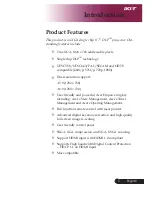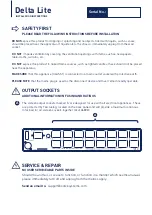
MD7PA
EM-8056 Rev.4 P. 5 / 5
WIRING INSTRUCTIONS
■
EURO TERMINAL
Torque: 0.3 N·m
Applicable wire size: 0.2 – 2.5 mm
2
Stripped length: 8 mm
MAINTENANCE
Check surge protectors periodically. Many cases of light-
ning are ignored, and even lightning at a far distance often
causes inductive surges.
We recommend that you check your surge protector about
twice a year, before and after the rainy season. Check
whenever you experience a strong lightning occurrence.
Checking procedure is explained in the following:
■
CHECKING
WIRING
1) Make sure that wiring is done as instructed in the con-
nection diagram.
2) Make sure that the DIN rail is connected to the metal
enclosure of protected device.
3) Make sure that the surge protector is securely attached
to the DIN rail, and that the rail is grounded to earth.
DISCHARGE ELEMENT
1) Remove all wiring connected to the surge protector when
you test the module.
2) Check resistance across the following terminals on the
high resistance range of multimeter and confirm no con-
duction.
Terminals (4) – (5), (4) – (DIN rail),
(5) – (DIN rail), (8) – (DIN rail)
The tester should show 10 MΩ or greater.
For the MD7PA-FGx, (8) – (DIN rail) should show approx.
0 Ω.
3) Confirm conduction across the same terminals with a 500
V DC 1000 MΩ insulation tester. The tester should show
20 MΩ or less.
4) If any of the above tests shows negative, replace the
surge protector.
056 222 38 18
www.sentronic.com
SENTRONIC
AG























